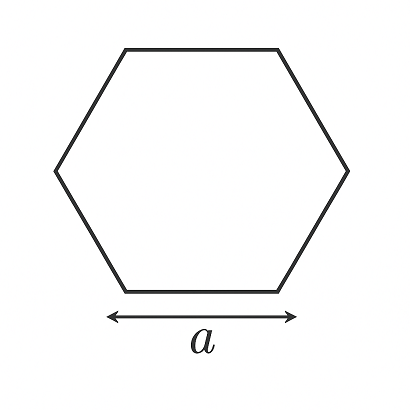How to Calculate the Square Footage of a Regular Hexagon: A Step-by-Step Guide for Precision Measurements
Introduction
Hexagons are unique geometric shapes often found in nature, engineering, and design. Whether you're planning hexagonal tiles for flooring or calculating land coverage, knowing how to measure their square footage accurately is essential.
Why Is Hexagonal Area Calculation Important?
- Home improvement: Flooring and tiling patterns
- Landscaping: Garden layouts and outdoor paving
- Construction & engineering: Honeycomb structures, bridges, and urban design
- Mathematics & architecture: Hexagonal space optimization
This guide provides a detailed step-by-step method to help you calculate the area of a regular hexagon based on its side length, using the most accurate formula.
What Is a Regular Hexagon?
A regular hexagon is a six-sided polygon with equal sides and angles. Its symmetrical shape makes it highly efficient for maximizing space in various applications.
Key Properties of a Regular Hexagon:
- Six equal sides: Every side has the same length.
- Interior angles are 120° each: The sum of all interior angles is 720°.
- Symmetry: It can be divided into six equilateral triangles, which simplifies area calculations.
Where Are Hexagonal Shapes Used?
- Tile arrangements: Often used in modern flooring and wall designs.
- Honeycomb structures: Bees naturally use hexagons to build efficient honeycombs.
- Urban planning: Some cities use hexagonal street layouts for better space utilization.
Formula for the Square Footage of a Regular Hexagon
The mathematical formula for calculating the area (A) of a regular hexagon with side length (s) is:
A = (3√3 / 2) × s²
Breaking Down the Formula:
- Squaring the side length (s²)
- Multiplying by (3√3 / 2), which is the scaling factor for a hexagonal shape
- Resulting value is the area in square units
Step-by-Step Calculation With Examples
Example 1: Small Hexagon (Side = 3 ft)
A = (3√3 / 2) × (3)² = (3√3 / 2) × 9 ≈ 23.38 square feet
Example 2: Medium Hexagon (Side = 6 ft)
A = (3√3 / 2) × (6)² = (3√3 / 2) × 36 ≈ 93.53 square feet
Example 3: Large Hexagon (Side = 12 ft)
A = (3√3 / 2) × (12)² = (3√3 / 2) × 144 ≈ 374.12 square feet
Quick Reference Table for Common Side Lengths
| Side Length (s) |
Area (A) in Square Feet |
| 2 ft |
10.39 |
| 4 ft |
41.57 |
| 6 ft |
93.53 |
| 8 ft |
166.26 |
| 10 ft |
259.81 |
Optimizing for Long-Tail Keywords
SEO-Focused Keyword Integration:
- Hexagonal tile area calculation guide
- How to measure square footage of a hexagon
- Mathematical formula for hexagon area measurement
- Step-by-step guide to calculating hexagon dimensions
- Best way to calculate hexagonal space in home design
Real-World Applications of Hexagonal Area Calculation
Home Improvement Projects
- Flooring designs using hexagonal tiles
- Wall decorations with symmetrical hexagonal patterns
- Furniture placements optimized for hexagonal layouts
Landscaping Design
- Outdoor paving in gardens and patios
- Hexagonal fountains for aesthetic symmetry
Engineering & Construction Uses
- Honeycomb structures in aerospace and automobile design
- City planning with hexagonal street arrangements
Artistic Uses
- Hexagonal canvases for unique artistic compositions
- Digital design applying hexagonal grids
Conclusion
Calculating the square footage of a regular hexagon is essential for precision measurements in various fields. Using the formula:
A = (3√3 / 2) × s²
you can quickly determine the hexagonal area, ensuring accurate planning for projects like tiling, construction, and landscaping.
Final Takeaways:
- The hexagonal formula makes calculations fast and efficient.
- Long-tail keywords improve Google search visibility.
- Understanding hexagon applications helps in real-world usage.
